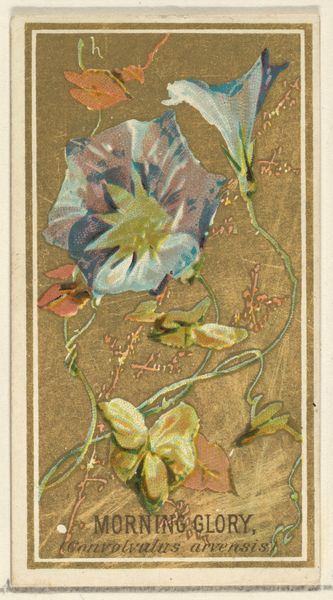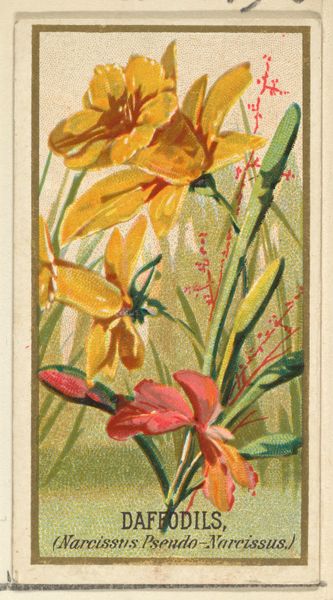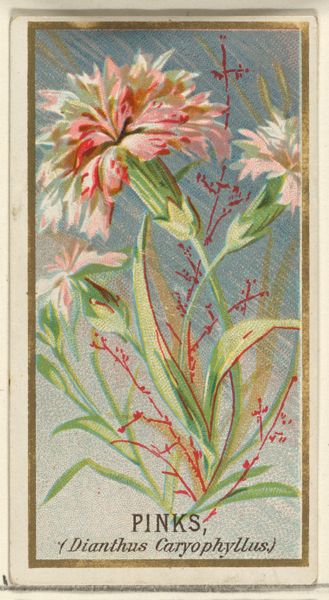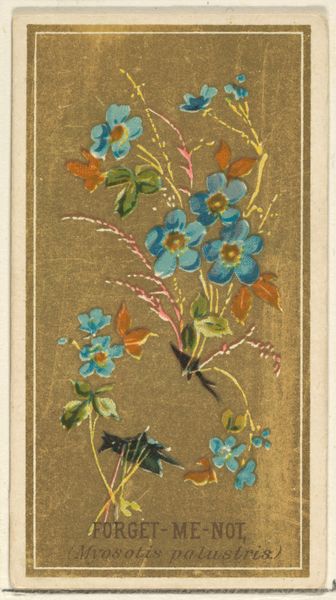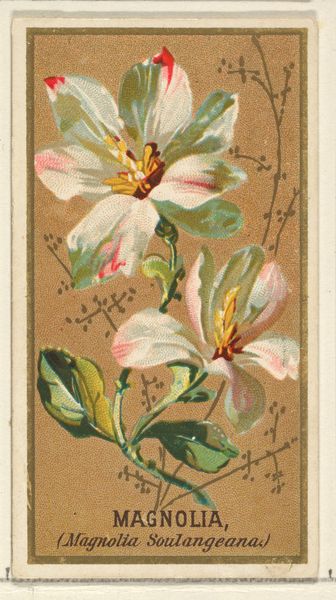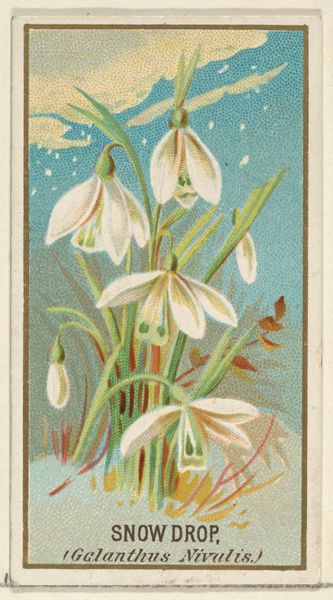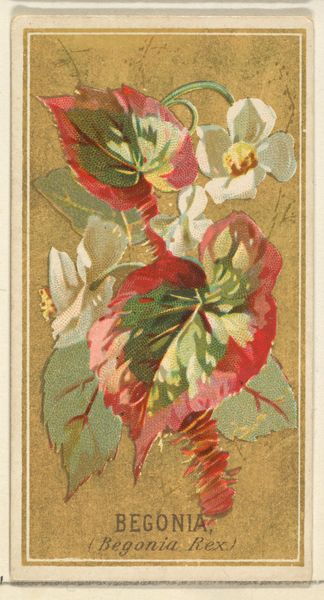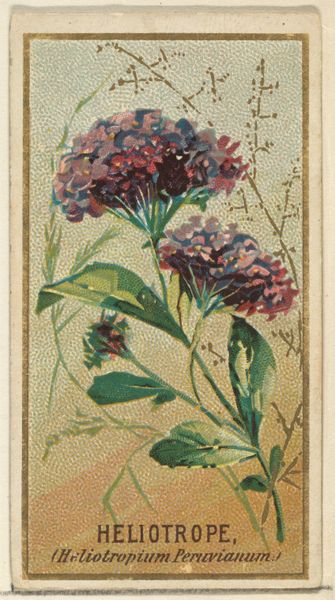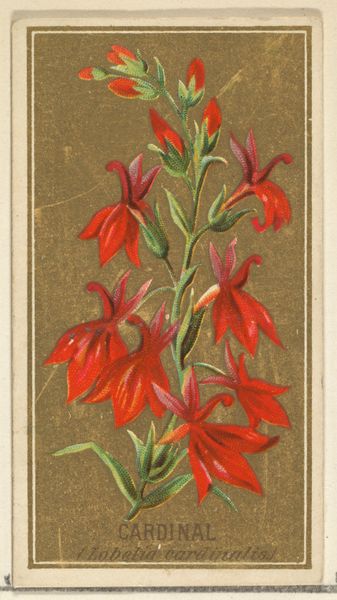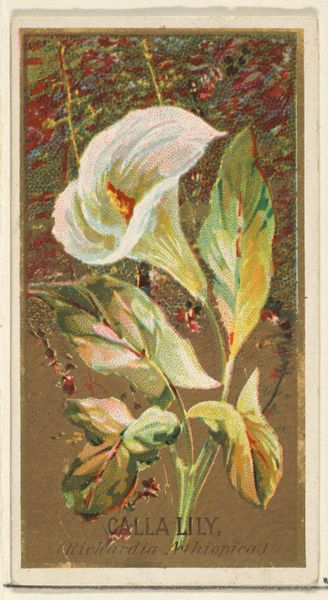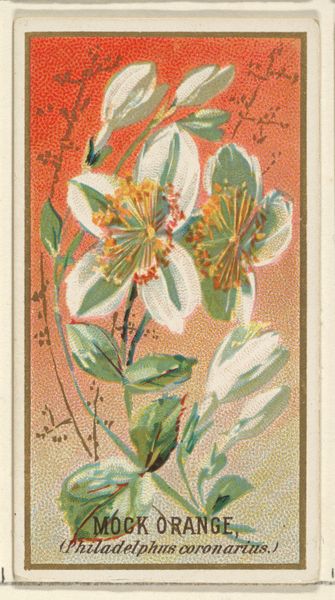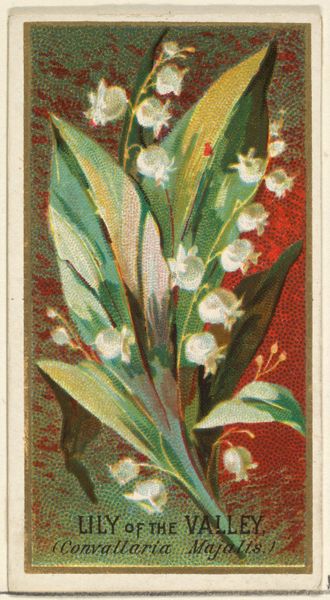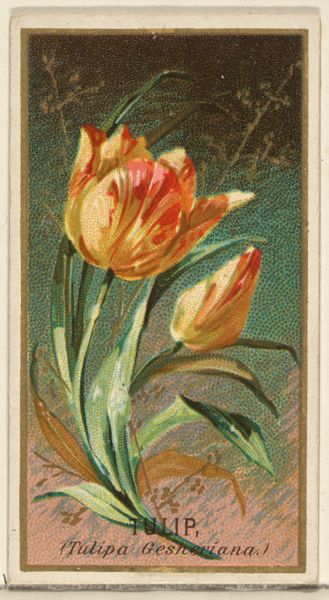
Quaker Lady (Houstonia caerulea), from the Flowers series for Old Judge Cigarettes 1890
0:00
0:00
drawing, print, watercolor
#
drawing
# print
#
watercolor
#
academic-art
#
watercolor
Dimensions: sheet: 2 3/4 x 1 1/2 in. (7 x 3.8 cm)
Copyright: Public Domain
Curator: Ah, the "Quaker Lady," or Houstonia caerulea, from an 1890 Goodwin & Company series made for Old Judge Cigarettes. It’s a watercolor drawing, printed and distributed, originally, as commercial ephemera. Editor: My first impression is quiet simplicity. The pastel palette evokes a sense of purity. It has a calming presence; like a tiny meditation. Curator: The medium tells us a lot. The choice of watercolor, readily reproduced, democratized the image. Here was beauty made accessible on a functional product—tobacco. The flower became a symbol entangled with consumption and pleasure. Editor: The flower itself—its symbolism interests me. The "Quaker Lady" evokes ideas of modesty, humility, and inner peace. Given its association with a tobacco brand, isn’t it ironic how this emblem of tranquility was paired with a product associated with habit and perhaps, nervous energy? Curator: Absolutely, that contradiction underscores the complexities of late 19th-century society. These trading cards highlight consumer culture but are beautiful works in their own right, thus raising the status of promotional materials and complicating our definitions of art. Editor: Precisely! And consider the color choices: blues have long been associated with fidelity and serenity. The small splash of crimson stems almost suggests life-force, subtly animating the stillness. Curator: Indeed, the chromatic accents speak volumes. These cigarette cards provide insight into Victorian sensibilities, values around nature, and how industries utilized aesthetic symbolism in consumer markets. Editor: A world of meaning held within a delicate image originally destined for momentary distraction, revealing social and cultural layers if you simply examine it closely. Curator: Quite so! Something as ephemeral as a cigarette card reveals larger patterns of labor, commodification, and value assignment during the time of its creation. Editor: What begins as an aesthetic moment of quiet observation unfolds into a much larger bloom of understanding.
Comments
No comments
Be the first to comment and join the conversation on the ultimate creative platform.
